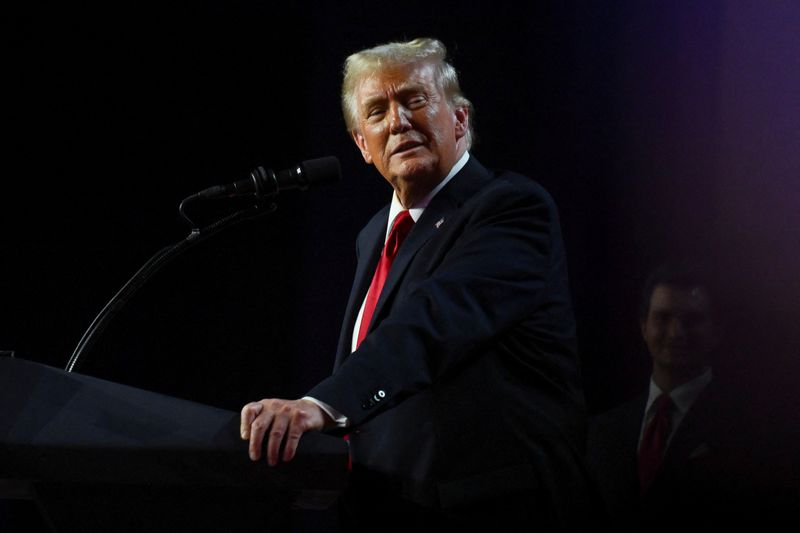NEW YORK (Reuters) – The U.S. fiscal health is at higher risk after the election of Republican Donald Trump as the next U.S. president and given the likely composition of Congress, said rating agency Moody’s (NYSE:MCO).
U.S. budget deficits and government debt levels were largely projected to surge under either candidate in the Nov. 5 election, according to several estimates, although Democrat Kamala Harris was expected to add less debt than Trump.
Trump’s victory has contributed to a selloff in government bonds earlier this week as key elements of his economic plans such as tax cuts and tariffs are expected to lead to faster growth as well as higher inflation and wider budget deficits.
As of Friday, Trump’s Republicans appeared set to possibly win control of both chambers of Congress, a scenario that could allow for a faster implementation of new policies.
“In the absence of policy measures to help limit fiscal deficits, the federal government’s deteriorating fiscal strength will increasingly weigh on the US sovereign credit profile,” Moody’s said in a Nov. 7 note.
“Given the fiscal policies Trump promised while campaigning, and the high likelihood of their passage because of the changing composition of Congress, the risks to US fiscal strength have increased,” it added.
Moody’s remains the last of the three major rating agencies to maintain a top rating for the U.S. government.
It lowered the outlook on its triple-A U.S. credit rating to “negative” from “stable” in November last year, and it typically “resolves” an outlook, meaning in case of a negative outlook it either brings it back to stable or goes ahead with a rating downgrade, within 18 to 24 months.
“With Republican control of the Legislature and the Executive, policy shifts could be implemented quickly,” said the agency.
This raised the risk of “potentially abrupt and sweeping changes in tax, trade, immigration and climate policies that could particularly affect manufacturing, technology and retail,” it said.

